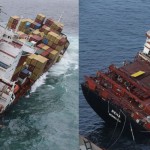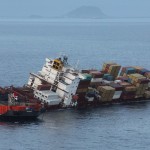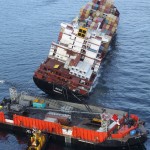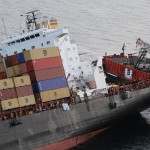Rena Summary (November 1 to 26)
Oil Recovery
The final 319 tons of heavy fuel oil was pumped from the Starboard No. 5 tank on November 13 completing the removal of fuel off the Rena. Salvors will continue to remove any residual oil found in other parts of the vessel. It is believed that some 60 tons of oil may be trapped in the vessel’s keel.
Container Removal
The crane barge Sea Tow 60 took up position at the stern of the Rena and has removed a total of 95 containers from the vessel. The containers can only be removed with good weather conditions. Large swells or high winds cause the greatest risk to operations and have slowed the recovery process. Some 220 transponders have been attached to containers that have either dangerous cargo or at risk of falling into the sea. There are over 1100 containers still on board the Rena.
Environmental Recovery
Authorities have reported that 922 tons of waste has been removed from the area beaches. Crews have used water blasting and washing rocks by hand along the rocky shorelines. The wildlife facility is currently caring for 409 animals. Over 2000 dead birds have been collected.
Editorial
The container vessel Rena has remained intact long enough to allow salvage crews to avoid an environmental disaster. The Rena was predicted not to survive several storms after going aground on October 5 on Astrolabe Reef. The vessel did suffer structural damage with several cracks along its hull, but has remained intact long enough to allow salvage crews to pump some 1000 tons of fuel off the vessel. This is a great accomplishment for the salvage company and their employees. However, the damage to the coastline has already been done. Over 350 tons of oil was spilled from the vessel fouling the coastline around Tauranga, New Zealand. Government and the private sector must be prepared for shipwrecks occurring anywhere in the world.





